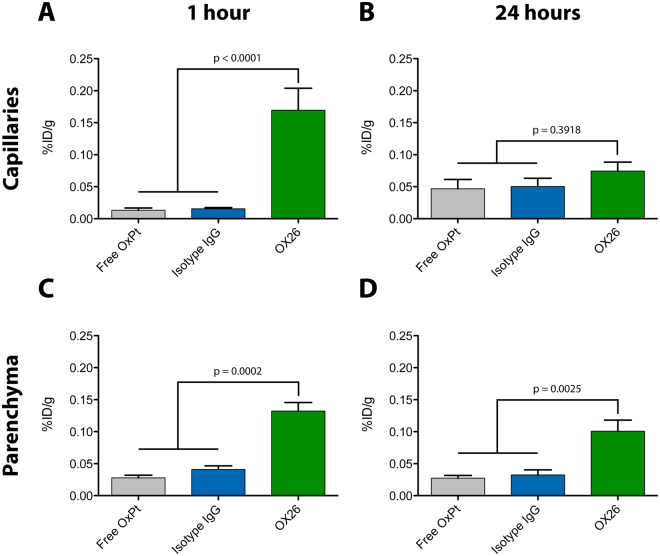Figure 8.
Uptake of oxaliplatin into different brain fractions after capillary depletion. Oxaliplatin-loaded immunoliposomes or free oxaliplatin were injected into young rats and allowed to circulate for the specified number of hours. The rats were sacrificed and their brains homogenized for subsequent capillary depletion. The isolated fractions from the capillary depletion (capillaries or parenchyma) were analysed for their content of platinum by ICP-MS. (A) After 1 hour, there was a pronounced platinum accumulation in the brain capillaries of rats treated with OX26 immunoliposomes as opposed to those treated with isotype IgG immunoliposomes or free oxaliplatin (p < 0.0001). (B) This difference in brain capillary accumulation between the different groups could not be detected after 24 hours (p = 0.3918). (C) After 1 hour, treatment with OX26 immunoliposomes facilitated a higher platinum content in the brain parenchyma compared to treatment with isotype IgG immunoliposomes or free oxaliplatin (p = 0.0002), (D) which seemed to stay residing after 24 hours (p = 0.0025). Data are presented as mean + SEM (n = 4–5), and the p-values depicted were derived from a one-way ANOVA with Tukey’s multiple comparisons post hoc test. %ID/g: Percentage of injected dose per gram. OxPt: Oxaliplatin.

